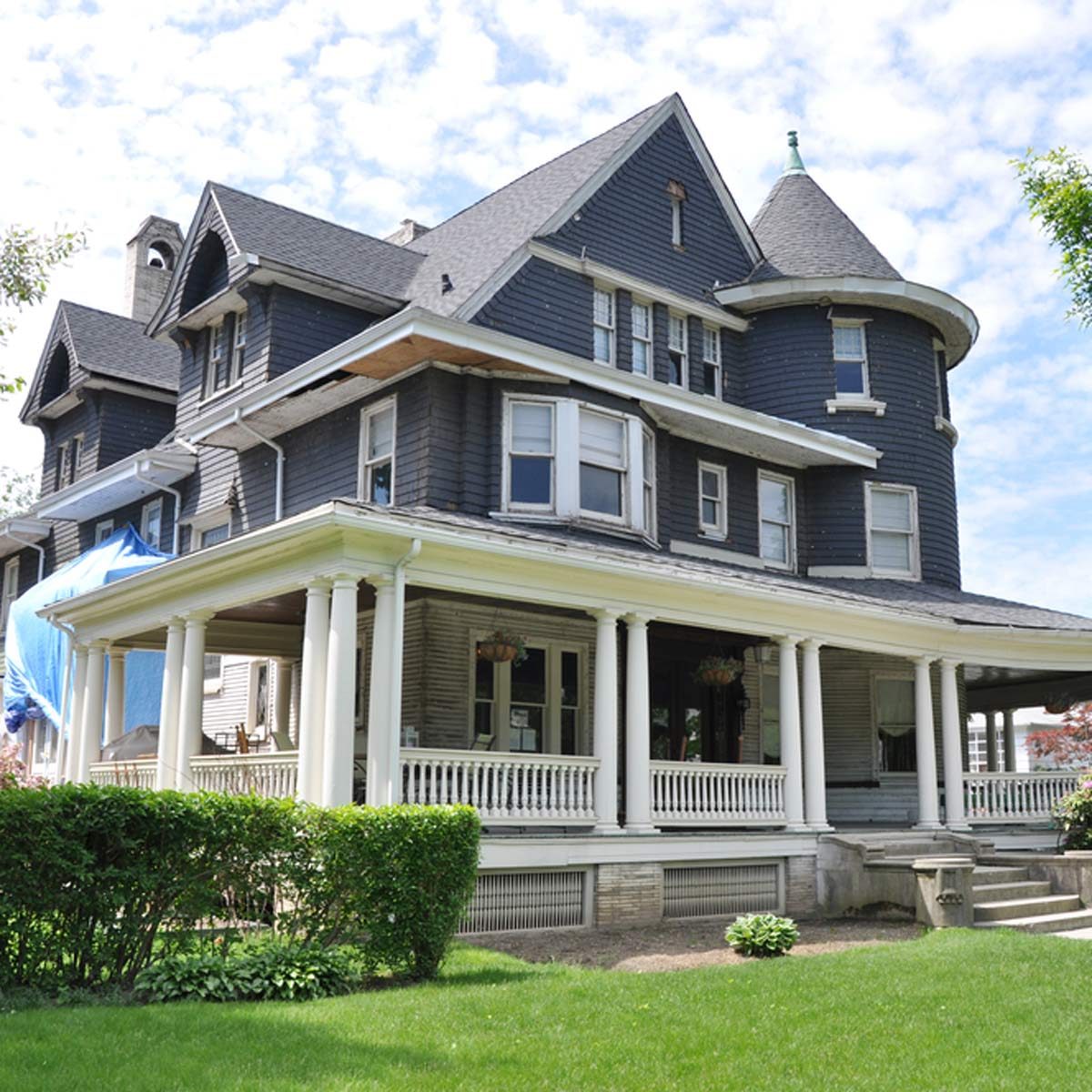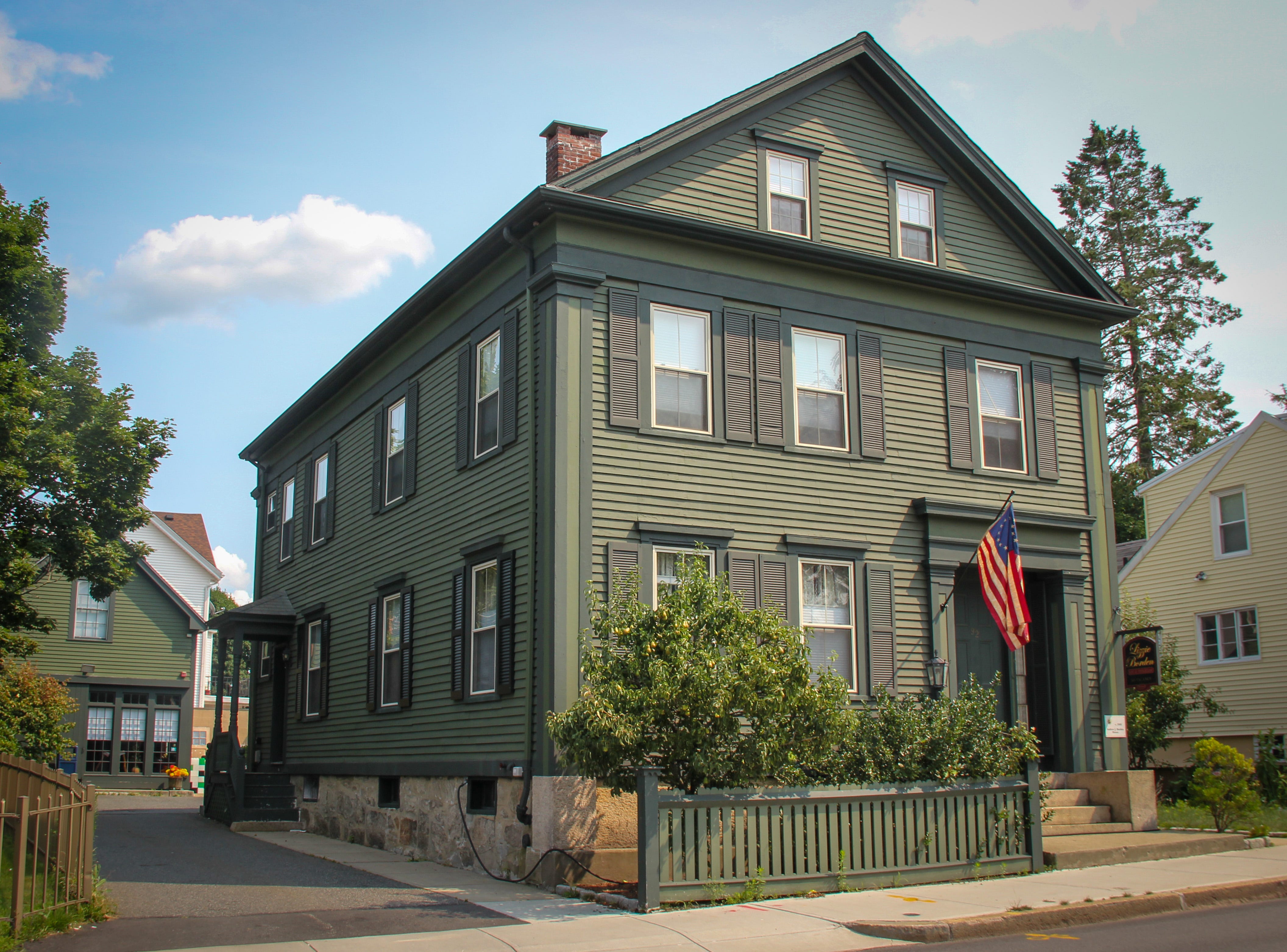Table Of Content

Working with Jacqueline Black and Michelle Porreca, Williams brought in a Chinoiserie wall covering to give the space a garden-like atmosphere. They also installed a grass cloth ceiling treatment and sisal rug to add texture. Native California wildflowers accent the Arroyo Vista Garden, which was designed with fire safety in mind. Landscape architect Elisa Read Pappaterra filled the center fountain with cascading succulents. Jerome Thiebault created a polished and petite bathroom complete with storage and a shower. Troweled cement plaster was applied to the walls, and handcrafted Zia tile adds pattern to the floor.
Greek Revival Architecture

Timothy Dale is a home improvement writer who has been in the industry for several years. In his work for BobVila.com, he has written a number of how-to articles related to yard maintenance, vehicle repair, and home renovation, not to mention a wide variety of buying guides and articles on DIY projects. He always ensures readers get the information they need to tackle their next project. Subterranean house is built completely underground, with only the roof above the ground level, which ensures enough light and ventilation.
What are the defining elements and characteristics of Victorian houses?
Cape Cod homes, a classic New England style dating back to the 1600s, began their re-emergence in 1930, alongside the Minimal Traditional, and also fell out of favor in the 1970s. The simple design and inexpensive materials made sense during the Great Depression, and in ensuing decades the style became popular in suburban America. The houses take their cue from the steep rooflines and large central chimneys of traditional British cottages (the pitch of the roof helping to shed snow during long Northeastern winters).
Folk Victorian
The gabled-front-and-wing style pictured here is the most prevalent type with a side-gabled wing attached at a right angle to the gabled front. Two subsets of the National style, known as "hall-and-parlor family" and "I-house," are characterized by layouts that are two rooms wide and one room deep. Massed plan styles, recognized by a layout more than one room deep, often sport side gables and shed-roofed porches. Identify the style by its entry, full-height, or full-building width porches, entryway columns sized in scale to the porch type, and a front door surrounded by narrow rectangular windows. The front-gable found in one subtype became a common feature in Midwestern and Northeastern residential architecture well into the 20th century. The townhouse variation is made up of narrow, urban homes that don't always feature porches.
Books About Old House Styles.
Inspired by medieval Italian villas and farm houses, the Italianate house style typically features deep overhanging eaves with highly decorative brackets, or the element that carries the weight of the eave. Ornamental elements such as decorative window crowns or pediments are common for Italianate houses. Inspired by Italian villas, these types of homes typically feature ground-level front porches supported by narrowly spaced columns. Named for the Tudor period in England and Wales, spanning the late-15th to the early-17th centuries, Tudor house styles today take loose inspiration from late Medieval manor homes. Originally combining Renaissance and Gothic design elements, today’s Tudor houses often feature white stucco exteriors framed by half-timbering or a dark brick or stone construction.
Designers Frank Slesinski and Serena Brosio collaborated on the charming living room in the Gatehouse. “One of the main things we did was add a window seat, which looks like it should always have been here,” Slesinski says. “Our whole goal with this space was basically to turn the lights on in the room, bring in the garden that’s outside, and kind of have an experience of a breath of fresh air,” Brosio says. “I’m all about gardens connecting the architecture into the landscape,” landscape architect Timothy John Palcic tells AD PRO. He used a limited palette of chartreuse and dark hues that nod to the brick exterior and arranged benches to create intimate seating areas within the larger English-garden-inspired space.
The Rotating House (San Diego, California)
In the 1930s, as the Great Depression took hold, housing tastes turned toward minimalist design and inexpensive construction. Minimal Traditional homes feature straightforward architecture designed to be as functional as possible at a low price. They can be seen widely across America, often appearing as a simple square or rectangular home with white or grey siding. The second story frequently has one or two small rooms, but the slanted roof impacts available head space. Minimal Traditional homes were in high demand from the early 1930s well into the 1970s.
There are few windows in this style of home, and the ones it does have are rather small. Their structures are asymmetrical and are not as extravagant as most Mediterranean-style homes, but still feature the same arches and wrought iron details. Modern architecture is known for a slightly industrial feel, a far cry from a Tudor or Colonial-style house. Modern homes feature sharp, clean lines, with many of them incorporating geometric shapes.
Country French House Style
Original Dutch Colonial homes feature flared roof eaves and creative wood and brickwork. They are much more ornamental than classic Colonial homes, though the Dutch Colonial Revival style tends to be more subdued than the original Dutch Colonial homes. Pueblo Revival houses have their roots in adobe houses built by Native Americans and Spanish colonial settlers in the Southwest. The style prevails in that part of the country, particularly in Arizona and New Mexico where originals survive.
Art Deco architecture really boomed during the mid-1920s and stuck around into the early 1930s. Its influences can be seen both in houses built at the time as well as in many commercial buildings such as skyscrapers (think Chrysler Building) and the iconic Hoover Building in Ealing, England. Another example of houses built in the UK during this period are Cape Dutch style houses, like the fine example below. Similarly, in the UK, early Victorian houses show influences of the Regency period that preceded it, although by the 1850s a more elaborate Italianate style took over. Gothic Revival style was also brought in at around this time as general wealth increased and more ornate details were made possible. Queen Anne Revival, Elizabethan and Tudor styles were all also mimicked during the period.
These homes use new construction materials like metal in both the structure and decorations. Modern homes focus on clean lines, lack of decorative details, asymmetry, and large windows to allow natural light to flow in. In response to the Industrial Revolution, Craftsman architecture, which emphasizes using natural materials, began to pop up. These homes were small to medium in size and simple in architectural detail.
Top 14 Best-Selling House Plans - Southern Living
Top 14 Best-Selling House Plans.
Posted: Tue, 27 Feb 2024 08:00:00 GMT [source]
This architecture is inspired by the countryside in Provence, France, where homes were more subdued rather than ornate. Originally popular in rural areas as the main residence on a working farm, farmhouses are now a popular house style in suburban and urban areas. Modern farmhouses take inspiration from the traditional style with large, front porches that sometimes wrap around, steeped roofs with gables and dormers, white-painted siding, and colorful shutters. Known for being charming and quaint, cottage homes are small houses often built in rural or suburban rural areas. Front doors are oversized and windows are tall and double-hung, bringing in tons of natural light to the cozy home. This home is the signature style of its namesake city, Cape Cod, Massachusetts.
Urban areas throughout the country feature rows of townhouses lining the streets. Townhouses are identical or nearly identical and are attached on both sides unless it's an end unit. These homes are often tall and narrow to create dense housing for large cities. The facades of these homes can feature many architectural styles including Federal, modern, and Victorian. Inspired by Italian Renaissance architecture with influences of Tuscan farmhouses, Italianate homes can be found in pockets across the country, including Brooklyn, Washington, D.C., San Francisco, and New Orleans. These homes have tall exteriors, overhanging eaves with decorative cornices and corbels, and features like cupolas and towers.
Like Georgian styles, the Federal home was in essence a simple box—usually two rooms deep (in most modest examples)—but eventually Frankensteined by architectural add-ons to the sides and back of the house. Among the style’s fascinating elements are steep roofs, mini-towers, and turrets, elaborate woodwork (Victorian homes, anyone?), as well as amazing exteriors and courtyard entries. European plans are typically one-and-a-half to two-story structures and may also come with basements. A red, barrel tile roof is something of a must, as are dark wood doors and windows. British colonial style as a whole can actually be split into several variations itself, including saltbox house style (featuring saltbox roofs) and Georgian style, more on which later. There are many variations of colonial style houses, all reflecting the influences of regions that the settlers coming over to the US at the time originated from.
Though its skyline will never measure up to the likes of New York or Chicago, Los Angeles has carved out its own architectural identity. Look below the glassy skyscrapers and you'll find Art Deco high-rises in Downtown Los Angeles, craftsman bungalows in Pasadena and envious estates along the hills and beaches. We think Los Angeles architecture is worth celebrating, so we've put together this guide to some of the city's most remarkable buildings and styles. Housing trends evolve, decade by decade, with some styles influencing future construction and other forms left in the past. Economic and technological surges and depressions have a powerful effect on how residential architecture develops, changing what each generation considers necessary in a home. Simply walking down the street in your neighborhood can be an opportunity to view trends from the past century, and some older cities even have functional homes dating back to the the founding of our country.

No comments:
Post a Comment